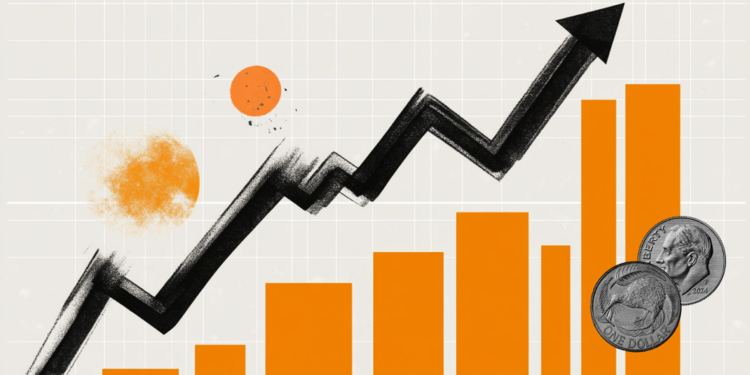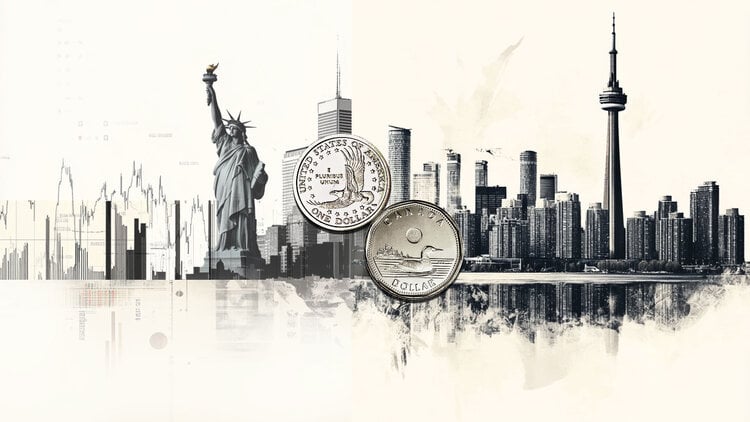- EUR/USD hovers around 1.0870, remains on the defensive due to multiple headwinds.
- Some ECB policymakers are comfortable with expectations of two more rate cuts.
- The US Dollar will dance to the tune of a series of US data.
The EUR/USD pair is trading near the immediate support of 1.0870 in the American session on Monday. The major currency pair remains on tenterhooks amid growing speculation that the European Central Bank (ECB) will cut interest rates two more times this year and a recovery move in the US Dollar (USD).
ECB policymakers view market speculation about two more rate cuts – one in September and the next in December – as appropriate. ECB policymaker Francois Villeroy de Galhau said in an interview on French radio BFM Business, “Market expectations for the path of interest rates seem to me to be quite reasonable at the moment,” Reuters reported.
Last week, the ECB left interest rates unchanged amid concerns that aggressive policy easing could reignite price pressures again. ECB President Christine Lagarde stopped short of previously committing to a specific rate-cut path.
This week, investors will focus on the preliminary Eurozone HCOB PMI data for July, due out on Wednesday. The report is expected to show that the composite PMI expanded to 51.1 from the previous release of 50.9 due to growth in manufacturing and service sector activities.
Meanwhile, the US Dollar is recovering its intraday losses that were triggered by growing uncertainty over the US Congressional elections. The US Dollar Index (DXY), which tracks the value of the Greenback against six major currencies, is hovering around a three-day high near 104.40.
This week, the US Dollar will be influenced by US economic data such as: S&P Global PMI, Second Quarter Gross Domestic Product (GDP), Durable Goods Orders and the Personal Consumption Expenditures (PCE) Price Index for June.
Euro FAQs
The Euro is the currency of the 20 European Union countries that belong to the Eurozone. It is the second most traded currency in the world, behind the US Dollar. In 2022, it accounted for 31% of all foreign exchange transactions, with an average daily volume of over $2.2 trillion per day. EUR/USD is the most traded currency pair in the world, accounting for an estimated 30% of all transactions, followed by EUR/JPY (4%), EUR/GBP (3%) and EUR/AUD (2%).
The European Central Bank (ECB), based in Frankfurt, Germany, is the reserve bank of the Eurozone. The ECB sets interest rates and manages monetary policy. The ECB’s main mandate is to maintain price stability, which means controlling inflation or stimulating growth. Its main instrument is to raise or lower interest rates. Relatively high interest rates – or the expectation of higher rates – generally benefit the Euro and vice versa. The Governing Council of the ECB takes monetary policy decisions at meetings held eight times a year. Decisions are taken by the heads of the national banks of the Eurozone and six permanent members, including ECB President Christine Lagarde.
Eurozone inflation data, as measured by the Harmonised Index of Consumer Prices (HICP), is an important econometric data point for the euro. If inflation rises more than expected, especially if it exceeds the ECB’s 2% target, the ECB is forced to raise interest rates to bring inflation back under control. Relatively high interest rates compared to their peers usually benefit the euro, as it makes the region more attractive as a place for global investors to park their money.
Data releases measure the health of the economy and can influence the Euro. Indicators such as GDP, manufacturing and services PMIs, employment and consumer sentiment surveys can influence the direction of the single currency. A strong economy is good for the Euro. Not only does it attract more foreign investment, but it can encourage the ECB to raise interest rates, which will directly strengthen the Euro. Conversely, if economic data is weak, the Euro is likely to fall. Economic data from the four largest Eurozone economies (Germany, France, Italy and Spain) are especially significant, as they account for 75% of the Eurozone economy.
Another important output for the euro is the trade balance. This indicator measures the difference between what a country earns from its exports and what it spends on imports during a given period. If a country produces highly sought-after export products, its currency will appreciate due to the additional demand created by foreign buyers who wish to purchase these goods. Therefore, a positive net trade balance strengthens a currency and vice versa for a negative balance.
Source: Fx Street
I am Joshua Winder, a senior-level journalist and editor at World Stock Market. I specialize in covering news related to the stock market and economic trends. With more than 8 years of experience in this field, I have become an expert in financial reporting.







